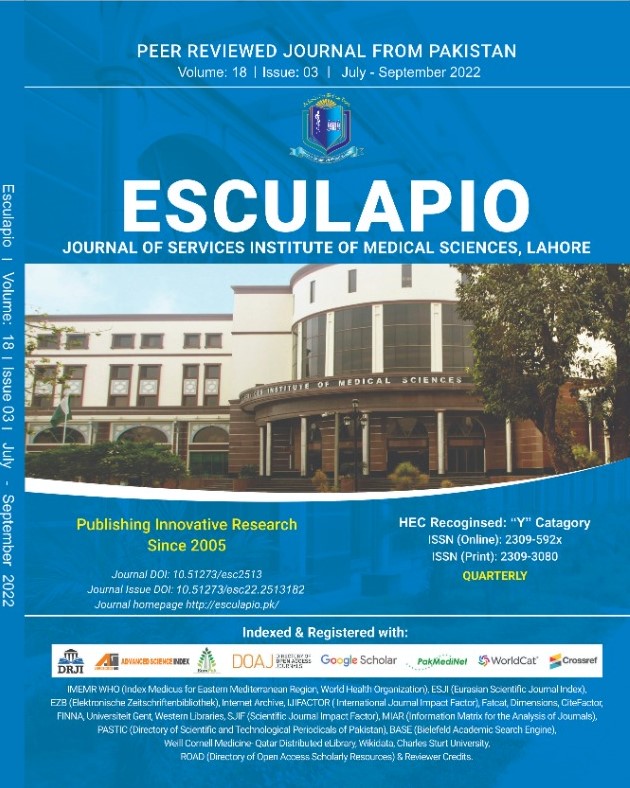Geographical, Clinical and Morphological Features of Molar Pregnancy in Pakistan
DOI:
https://doi.org/10.51273/esc22.2518318Keywords:
Hydatidiform mole, histopathology, trophoblast, chorionic villi, vesiclesAbstract
Objective: To determine the association of molar pregnancy with age, geographical distribution, clinical presentation and morphological features in our population.
Method: It is a 5-years retrospective cross sectional study commencing from 1st January 2015 to 31st December 2019 on uterine evacuation samples submitted for histopathology at Chughtai's Institute of Pathology (CIP) and Central Park Teaching Hospital (CPTH), Lahore, Pakistan. Case records of all reported molar pregnancies during the study period were retrieved from computer files.
Results: A total of 462 cases of hydatidiform mole were diagnosed during this period. These constituted of 313 cases (67.74%) of complete hydatidiform mole (CHM) and 149 cases (32.25%) of partial hydatidiform mole (PHM). Maximum number of cases were received from the province of Punjab constituting of 242 cases (52.38%) followed by 132 cases (28.57%) from Khyber Pakhtunkhuwa (KPK). However, maximum cases of complete moles were reported from the province of KPK constituting of 110 cases (83.33%) out 132 submitted samples. Geographical distribution of molar pregnancy was observed as a statistically significant associated factor regarding morphological features (X2 = 23.732, p-value=0.000). Females ranging in age from 16 to 58 years were included in the present study. Maximum cases were reported in the 21-30 years age group comprising of 272 cases (58.87%) of which CHM constituting a maximum figure of 200 cases i.e 73.52% (p-value=0.004). Maximum specimens comprising of 265 cases (57.35%) showed grape like clusters on gross. The most common clinical presentation was vaginal bleeding constituting of 395 cases (85.49%). Incidental molar pregnancy was seen in 79 cases (17.09%).
Conclusion: Females with molar pregnancy can be cured and their reproductive function preserved provided their initial treatment and follow-up is timely and appropriate. Histopathological examination of molar tissue is the gold standard for its definite diagnosis & categorization as CHM & PHM.
How to cite: Babar K, Rathore S, Arshad M, Niazi S, Mahmood N, Chughtai AS. Geographical, Clinical and Morphological
Features of Molar Pregnancy in Pakistan. Esculapio - JSIMS 2022;18(03):329-335










